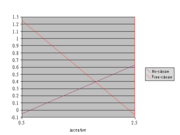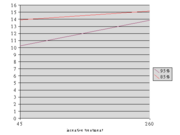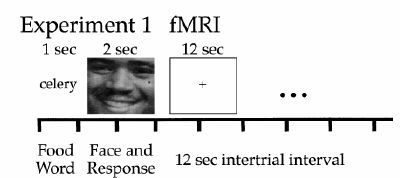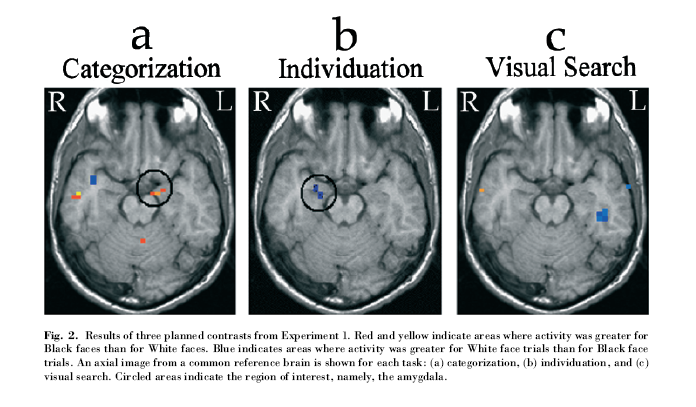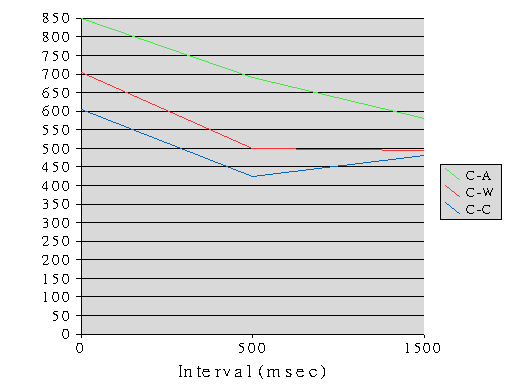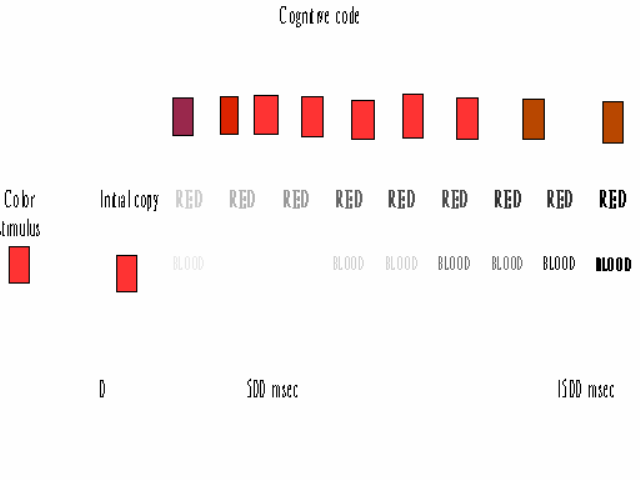心理實驗法第七講:factorial design
出自KMU Wiki
目錄 |
Factorial design
- 隨著時代進步,心理學的方法也進步
- 但心理學想問的問題本質沒有變
- 探討人類心理與行為背後存在的...
- 以前所有問題都只能問最簡單的地方
- 現在有能力問更多
- 為什麼要問更多?
實驗的目的
- Cause-and-effect relationships
- Deprivation -> hungry
- Conflict -> anxiety
- 但人的行為/心理現象通常不是只有一個原因造成
- 高速公路標示辨識為例
- 什麼因素會影響高速公路標示辨識?
- 光線
- 認字能力(韓文標誌看得懂嗎?)
- 意識狀態(如24小時未睡)
- 吃藥或喝酒
- ......
- 不只一個原因影響
- 高速公路標示辨識為例
多因子設計
- 多因子設計(factorial design)
- 例如
- 父母育兒具敵意且過度干涉 -> 小孩退縮
- 若再加上忽略小孩 -> 小孩反社會
- 有些問題勢必兩項或以上的因素在一起才會發生
- 例如
Case study 1
Ehrenfreund and Badia (1962)
- 目的:老鼠在不同剝奪量和獎賞量下表現
- Factor 1 剝奪量
- 95% / 85% ad lib (free-feeding) weight
- Factor 2 獎賞量
- 45mg / 260mg food pellet
- Factor 1 剝奪量
- Dependent variable
- 5 feet跑道中間2 feet的速度
- 控制
- Ad lib weight
- 自然狀態下的體重
-
- 因為每一隻老鼠的體重進食量不一,因此控制剝奪量本身對於個別動物的影響不同
- 量中間段的速度
- 因為起跑段與終點段的變化比較大
- Ad lib weight
- 結果
- p.55 table 4.1
- p.55 table 4.1
| Incentive treatment | Deprivation treatment | |
| 95% | 85% | |
| 45mg | ||
| 260mg | ||
- Factors, variables and levels
- Case study 1 為 2X2之factorial design
- Factor 1 為剝奪量
- 有2 levels 之variables
- 即high and low deprivation
- Factor 2 為獎賞量
- 亦有2 levels 之 variable
- 即high and low incentive
- 最多有幾個factor?
- 平常的用語,Factors有時說成variables但一般不會反過來
- Factors與variables組合
- High deprivation – high incentive
- High deprivation – low incentive
- Low deprivation – high incentive
- Low deprivation – low incentive
- 2X2 = 4種組合
- 如果2X2X3 = 12種組合
Measuring attitude
- 態度的測量
- 問卷調查
- 你贊成增加給窮人的社會褔利支出嗎?->19%
- 你贊成增加給窮人的社會救助支出嗎?->63%
- 問卷調查中抽樣的三個層次
- 實體抽樣
- 問題之抽樣
- 受訪者回答之抽樣
- 問卷調查
2Cognitive dissonance theory (Festinger,1957)
- Attitude change occur in high-dissonance condition
- Linder, Cooper, and Jones(1967)
- 2X2 factorial design
- Task 寫一篇支持控制言論自由的文章(原本為反對的人)
- Factor 1 選擇(有無告知實驗參與者可不可以有選擇)
- Factor 2 獎賞 $.5 / $2.5
- 結果2
- p.57 table 4.2
| Choice | Incentive | |
| $.5 | $2.5 | |
| No-choice | -0.05 | 0.63 |
| Free-choice | 1.25 | -0.07 |
- 繪圖
- p.57 figure4.1
- Analysis of variance
Statistically significant
- 'αlevel'
- .05代表20次有一次by chance顯著
- 'p value'
- 犯type I error 的機率
- 作圖的重要性
- Case study 1之圖
3 Subject variables
- Chi(1978)
- A variables -> recall digits / chess pieces
- B variables -> children / adults
- 結果 p.60 figure 4.3
- Interaction!!
4 Wheeler & Fiske (2005) 2 X 3
- p. 61 下面的圖
- A variable : race of face
- Black/ white
- B variable : social goals
- Categorization(判斷年齡)/ Individuation(食物喜好)/ Visual search(有無痣)
- 呈現方式
- 結果測量 fMRI 測amygdala
5 code and cognitive process
- “code” record in memory (Posner等人)
- Solso and Short (1979)
- 步驟
- 呈現「色板」
- 間隔後出現第二刺激
- 實驗參與者以按鍵反應「合不合」
- 記錄實驗參與者反應時間(reaction time)
- Complex factorial design
- Factor 1 (type of relationship)
- Color to associate / color to word / color to color
- Factor 2 ( delay between stimulus)
- 0msec. / 500msec. / 1500msec.
- Factor 3 (match or mismatch)
- 3 X 3 X 2
- Case study 5 figure
- Figure 4.5
Mental chronometry
- 實驗結果如p.63 figure 4.5
- Solso and Short的解釋如p.64 figure 4.6
-
- 由reaction time 推測內在歷程
- 利用tachistoscope (T-scope)
- Forced-choice procedure
- Within subject
- Model for case study 5
- Figure 4.6
